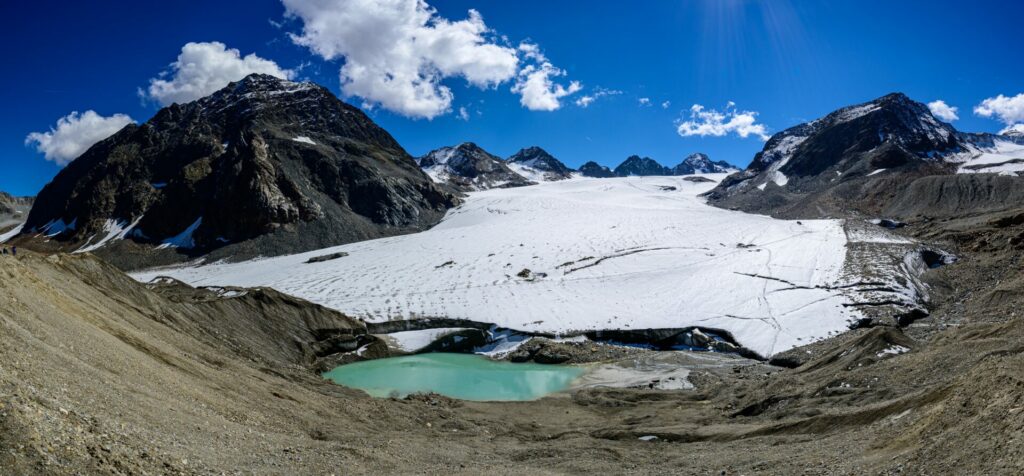The rapid melting of West Antarctica’s ice shelves may now be unavoidable as human-caused global warming accelerates according to new research.
As per worst-case scenarios modelled by the British Antarctic Survey (BAS), sea levels could rise by more than five metres in the future putting major cities such as Kolkata, New York, New Orleans, Venice and Dar es Salaam at risk of being flooded.
Even if the world meets ambitious targets to limit global heating, large scale melting of ice shelves will still occur, according to the new study published in the journal Nature Climate Change.

Ice shelves are thick, floating platforms of ice that extends from a landmass into the ocean. They act as natural barriers, helping to hold ice back on the land and slowing its flow into the sea, providing defence against sea level rise. As ice shelves melt, they thin and finally lose this ability.
The researchers studied how warm ocean currents melt the ice from beneath and projected the rate of ocean warming and ice shelf melting under different climate change scenarios. These ranged from the ambitious, where the world manages to limit global warming to 1.5 degrees Celsius above pre-industrial levels, to the worst-case, where humans burn large amounts of planet-heating fossil fuels.
‘How do you tell such a bad news story? Conventional wisdom is supposed to give people hope, and I don’t see a lot of hope in this story, but it’s what the science tells me and it’s what I have to communicate to the world.’
Dr Kaitlin Naughten, British Antarctic Survey
They found if the world limits temperature rise to 1.5 degrees Celsius, which it is not on track to do, climate change could still cause the ocean to warm at three times the historical rate.
Collapsing Ice Shelves
Even significantly cutting planet-heating pollution now will have a limited impact on preventing warmer oceans from triggering the collapse of the West Antarctic ice sheet into the Amundsen Sea, the report found.
‘It appears that we may have lost control of the West Antarctic ice melting over the 21st century,’ said Dr Kaitlin Naughten, an ocean modeler with the BAS and lead author of the study. ‘The question of doom and gloom is something I’ve spent a lot of time thinking about with this study, because how do you tell such a bad news story? Conventional wisdom is supposed to give people hope, and I don’t see a lot of hope in this story, but it’s what the science tells me and it’s what I have to communicate to the world.’
‘Our actions today likely will make a difference further down the line in the 22nd century and beyond, but that’s a timescale that probably none of us here will be around to see’
But although the outlook is dire, humanity cannot give up on slashing fossil fuel emissions, Naughten said, as devastating impacts can still be avoided in other parts of Antarctica and the rest of the world.
She said: ‘Our actions today likely will make a difference further down the line in the 22nd century and beyond, but that’s a timescale that probably none of us here will be around to see.

‘If we wanted to preserve it (the ice sheet) in its historical state, we would have needed action on climate change decades ago. The bright side is that by recognising this situation in advance, the world will have more time to adapt to the sea level rise that’s coming. If you need to abandon or substantially re-engineer a coastal region, having 50 years lead time is going to make all the difference.’
The Doomsday Glacier
West Antarctica is already the continent’s largest contributor to global sea level rise and has enough ice to raise sea levels by an average of 5.3 meters. It’s home to the Thwaites Glacier, also known as the ‘Doomsday glacier’, because its collapse could raise sea levels substantially, forcing coastal communities and low-lying island nations to be flooded and uninhabitable.

Ted Scambos, a glaciologist at the University of Colorado Boulder who was not involved with the study, said the findings are ‘sobering.’
‘The thing that’s depressing is the committed nature of sea level rise, particularly for the next century,’ Scambos told CNN. ‘People who are alive today are going to see a significant increase in the rate of sea level rise in all the coastal cities around the world.’
The only way to really stop the rapid melting of ice shelves, Scambos said, would be not just to cut levels of planet-heating pollution but also to remove some that has already built up.
‘This will be a real challenge,’ he said.













